Flagstone steps have quietly become the workhorse of modern landscapes—blending rugged beauty, long-term durability, and a finish that instantly elevates curb appeal. Their naturally flat surfaces create sure-footed paths, while irregular edges break visual monotony and invite the eye to wander. Because each slab is unique, every stair run feels hand-crafted rather than mass-produced. Recent cost calculators show that the material is an investment—often running $93–$116 per sq ft installed—but many homeowners gladly pay for the timeless character, cooler surface temperature, and easy upkeep that set flagstone apart from poured concrete alternatives.
1. Flagstone Steps as a Welcoming Entry Path
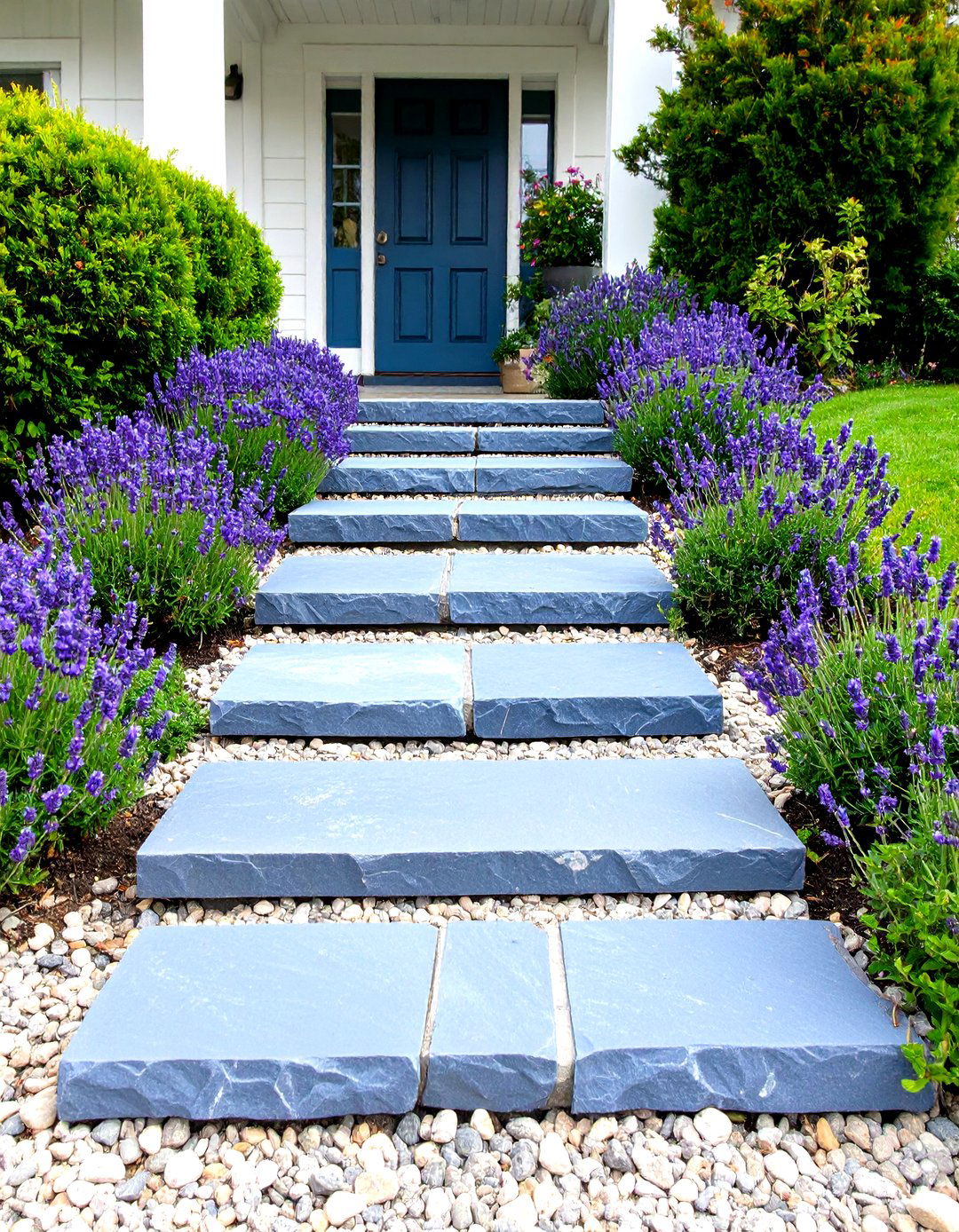
A sun-kissed flight of flagstone steps at the front door signals hospitality before guests even knock. Begin by grading a gentle rise so each riser sits 6–7 inches high; this proportion feels comfortable and meets most building codes. Infuse personality by selecting regional stone—bluestone in the Northeast or warm sandstone in drier climates—to echo local geology. Dry-lay the slabs over compacted gravel and bedding sand for a quick-draining base that prevents frost heave. Add low-growing thyme between joints for fragrance and erosion control. In one 2025 trend roundup, designers listed “rustic irregular entry steps” as their go-to for homes seeking instant charm without ornate hardscape.
2. Flagstone Steps for Taming a Steep Slope
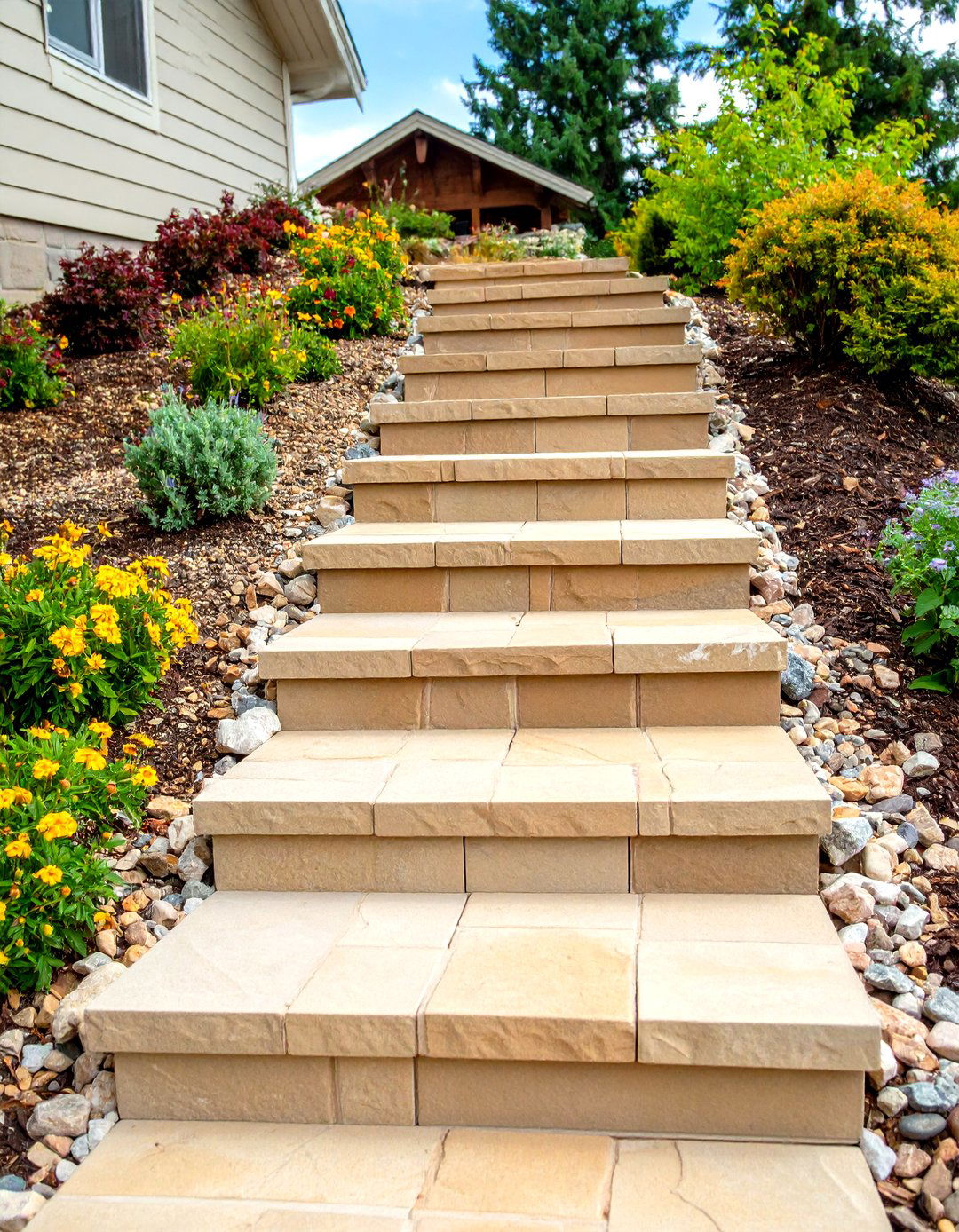
Unlike timber sleepers that rot or poured walls that can crack, flagstone steps carve a firm zigzag up awkward hillsides while doubling as retaining terraces that slow stormwater. Begin at the bottom, setting the first tread level and anchoring subsequent slabs back into the grade to lock each riser. Fill riser gaps with compacted crushed rock for drainage, then plant hardy groundcovers on either side to hold soil. Home makeover blogs report that this approach cuts slip risk in half compared with turf slopes and gives gardeners new pockets for cascading perennials.
3. Geometric-Cut Flagstone for Contemporary Flair

For homeowners leaning modern, precisely sawn rectangles create crisp lines that read minimalist rather than rustic. Layout a running-bond or herringbone pattern and keep joints under ½ inch to reinforce the refined aesthetic. Builders recommend polymeric sand between the cuts to lock pieces tight without mortar, letting the slabs flex slightly during freeze-thaw cycles. A 2025 design survey highlighted “geometric flagstone staircases” as a leading choice beside steel railings and glass deck panels—proof that natural stone can match sleek architecture.
4. Softening Steps with Living Green Joints
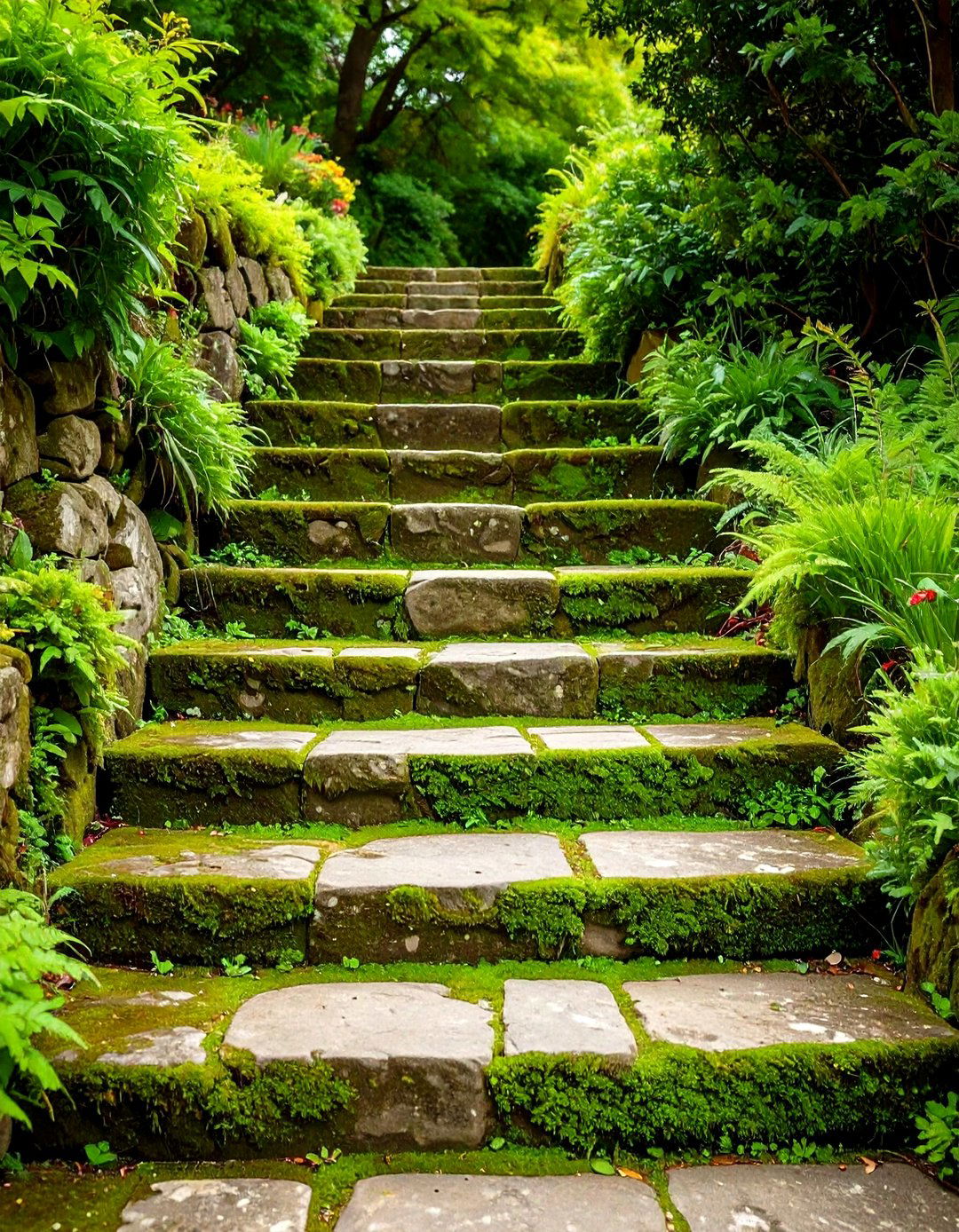
Consider tucking hardy moss or dwarf mondo grass between flagstone steps to blur the line between hardscape and garden. Botanical interstices cool the stone, reduce glare, and create micro-habitats for pollinators. Sustainable-landscape consultants praise flagstone for its permeability; water seeps through joints instead of rushing into storm drains, easing urban runoff pressures. Because plant roots anchor the bedding sand, they also discourage ants from tunneling under slabs.
5. Selecting the Right Flagstone Thickness and Species

Durable steps start with slabs at least 1½ inches thick; thinner pieces may crack under foot traffic. Sandstone offers warm earth tones, while slate delivers deep blue-gray undertones that mask dirt. Quartzite, the densest option, shrugs off acid rain and heavy loads but costs more to quarry. Experts recommend sampling several stones side by side to judge sheen and slip resistance when wet. Reference guides note that flagstone categories—sandstone, bluestone, slate, quartzite, limestone—each carry distinct performance traits, so matching stone to climate matters as much as color.
6. Budgeting Wisely for Flagstone Steps
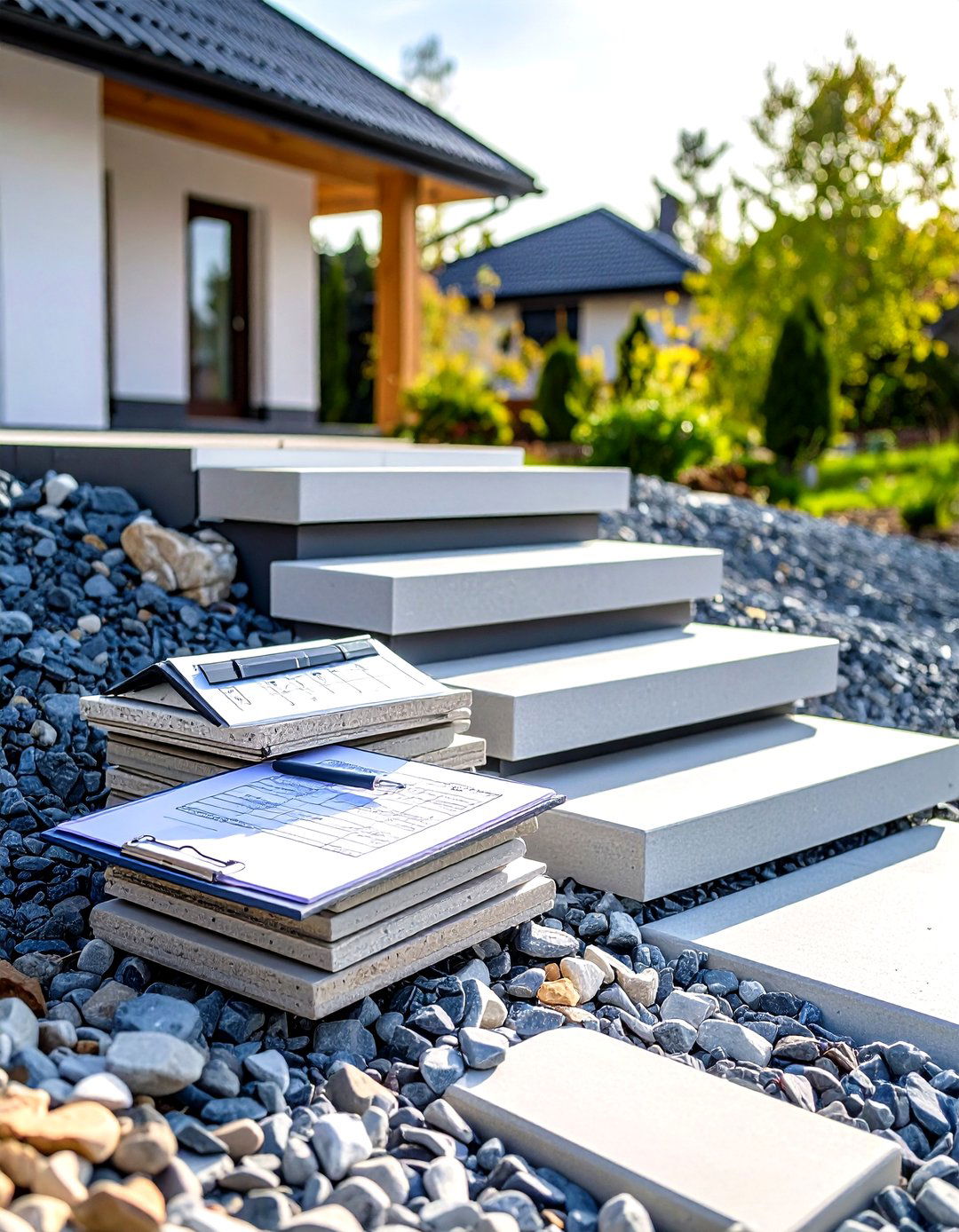
Sticker shock is real: national averages peg professional installation between $900 and $5,500 for a modest exterior staircase, driven by labor to maneuver heavy slabs and hand-fit joints. Mitigate costs by opting for local quarry off-cuts, which often come at a discount yet retain character. Splurging on a skilled mason pays dividends in longevity; crooked rises or hollow bedding lead to pricey callbacks. Online calculators let you model scenarios—adding under-step lighting or deeper foundations—to see where to save and where to invest.
7. Building a Reliable Base with Proper Drainage
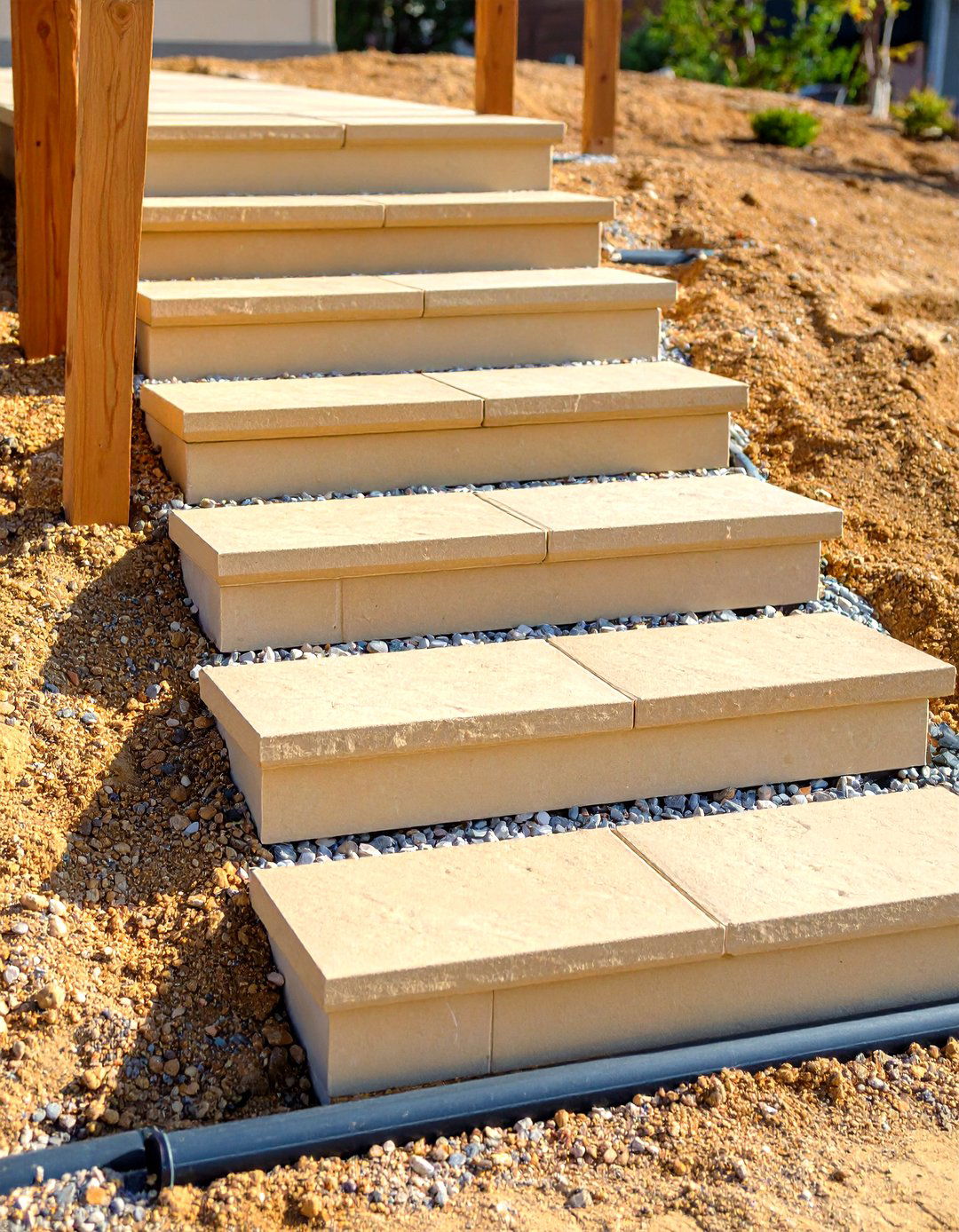
Water is the sworn enemy of stone stability, so begin with a trench 6–8 inches deep filled with compacted gravel to disperse moisture. Top with coarse sand, set each slab, and tamp gently until level. Lay perforated pipe beneath long runs on clay soils to channel runoff away. Landscape pros emphasize checking levels side-to-side and front-to-back on every tread; tiny errors compound quickly into ankle-twisters. A recent tutorial on stone-path construction stresses that drainage diligence extends staircase life well beyond two decades.
8. Mortar-Set vs. Dry-Laid Flagstone Steps
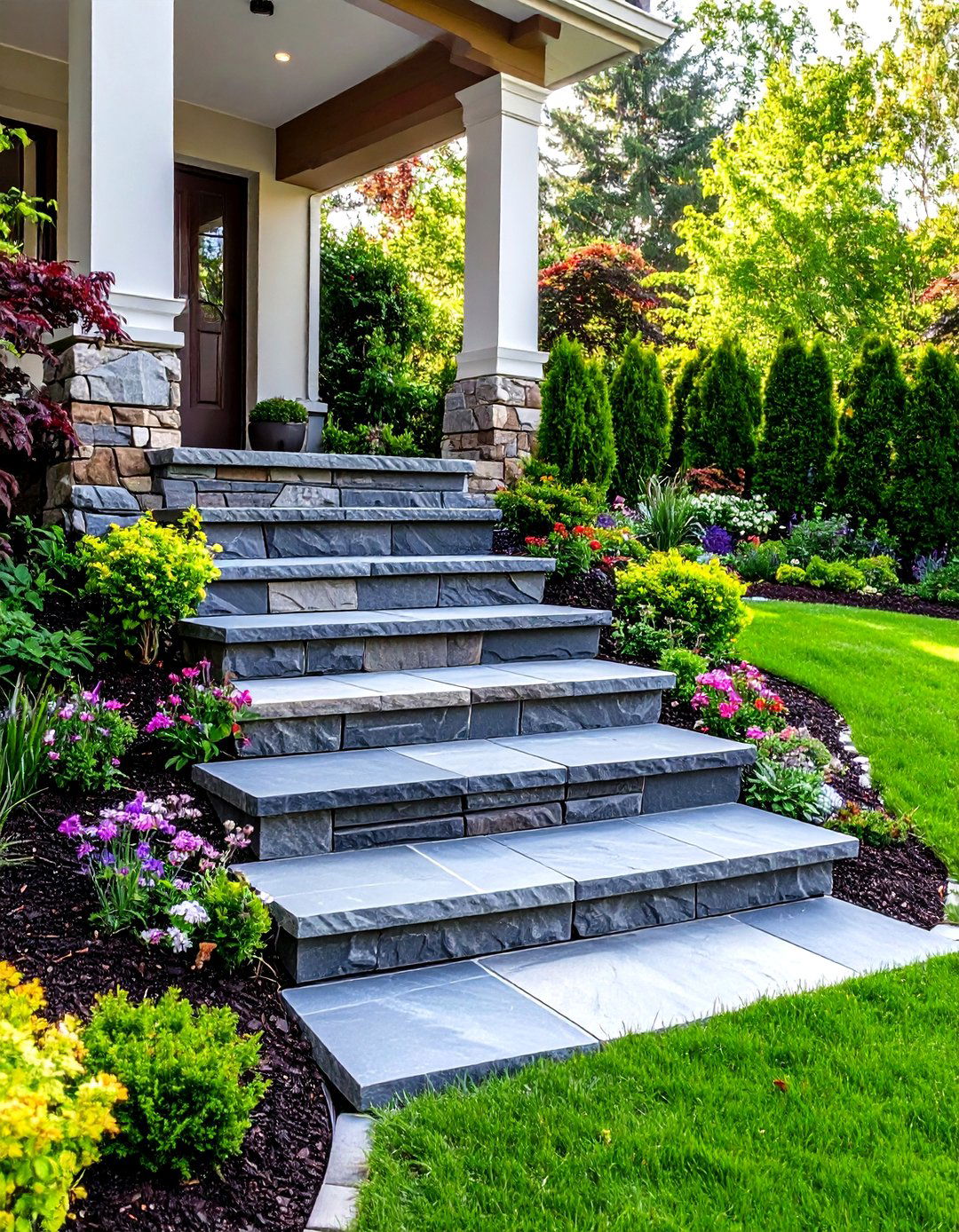
Mortar-setting flagstone steps creates a monolithic stair run ideal for high-traffic entries and formal patios. However, rigid joints can crack if soil shifts. Dry-laid assemblies flex naturally and make repairs easier—simply lift a rock, replenish sand, and reset. Many homeowners adopt a hybrid strategy: mortar the risers for structural integrity, then leave treads dry-set for drainage. This compromise balances peace-of-mind with maintainability, especially in freeze-thaw climates.
9. Heat-Smart Stone Choices for Hot Climates

Flagstone’s low heat retention keeps midsummer steps barefoot-friendly—an advantage concrete cannot match. Lighter-colored limestone and sandstone reflect sunlight, dropping surface temperatures by as much as 15 °F compared with darker aggregates. In desert regions, masons suggest shade trees or pergolas along sun-baked stair flights to protect both people and stone. Comparative studies list flagstone as one of the few hardscape materials that remain cool enough for pets during peak afternoon heat.
10. Cleaning and Sealing for Long-Term Beauty
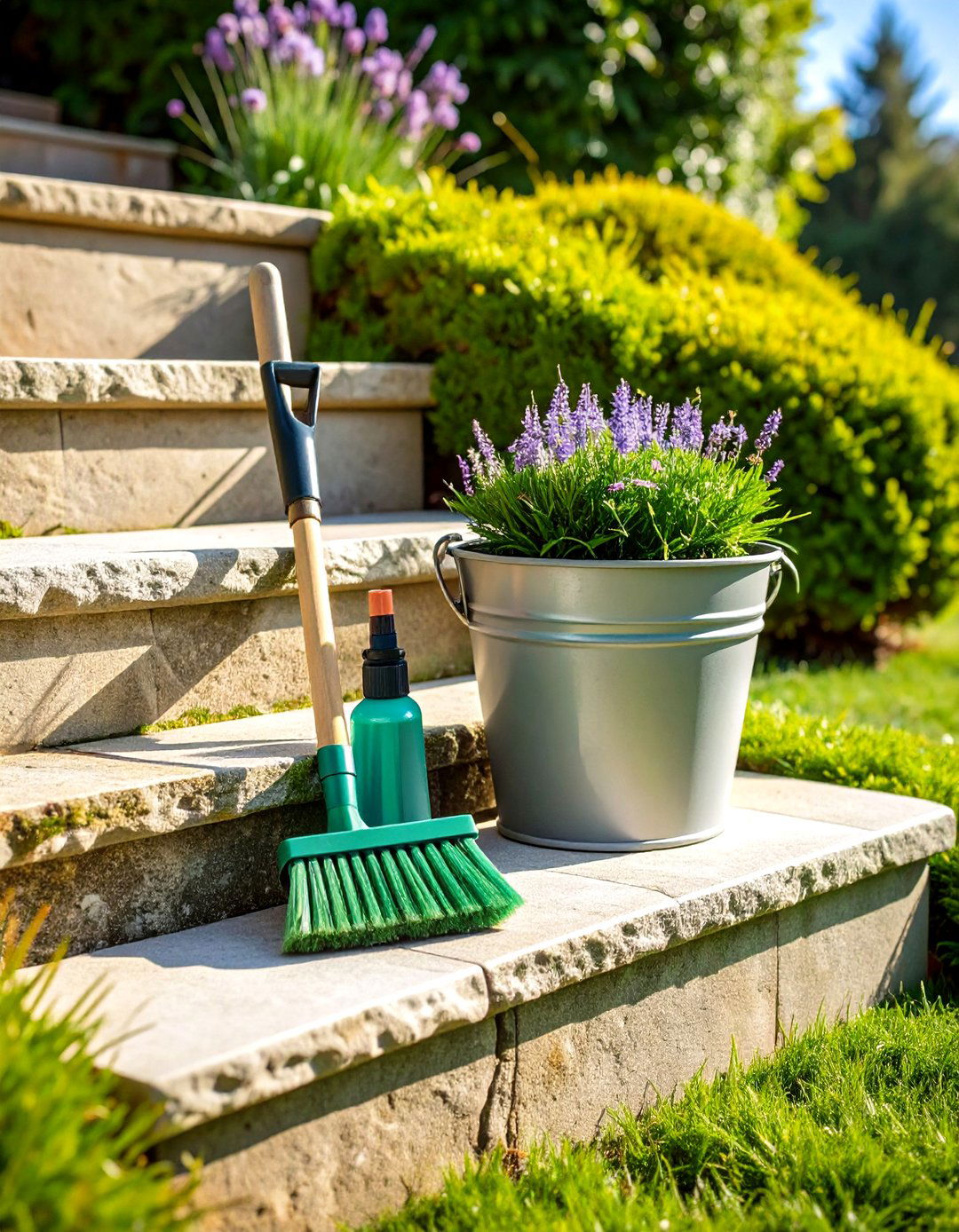
Routine maintenance boils down to sweeping debris, scrubbing algae with a mild detergent, and resealing every 12–24 months. High-quality breathable sealers block stains yet allow trapped moisture to escape—preventing spalling. Skip glossy coatings that turn slick in rain; instead, choose penetrating formulas that leave the surface textured. Industry pros warn that ignoring sealer upkeep can double restoration costs later. Recent guides emphasize addressing spills quickly to prevent deep discoloration on porous stone.
11. Designing Slip-Resistant Flagstone Steps
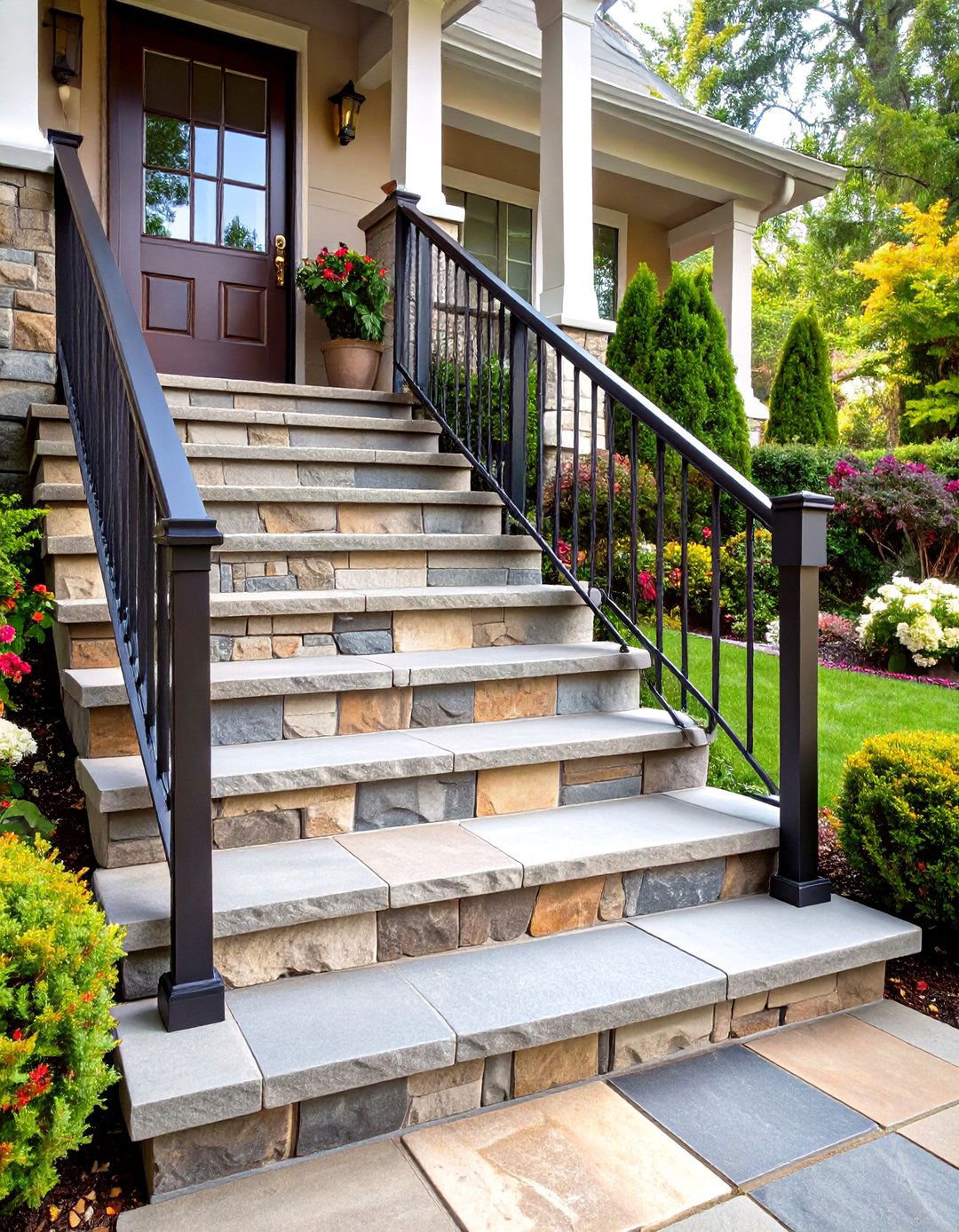
Safety starts with adequate tread depth—11 inches is ideal—and a mildly textured stone finish. Avoid overly polished surfaces or steep joint sand that can wash out and leave wobbly edges. Handrails anchored into masonry add confidence, especially for children and seniors. Comparative material reviews rank flagstone higher than smooth concrete for traction, particularly after sealing with micro-grit additives.
12. Illuminating Flagstone Steps for Nighttime Safety
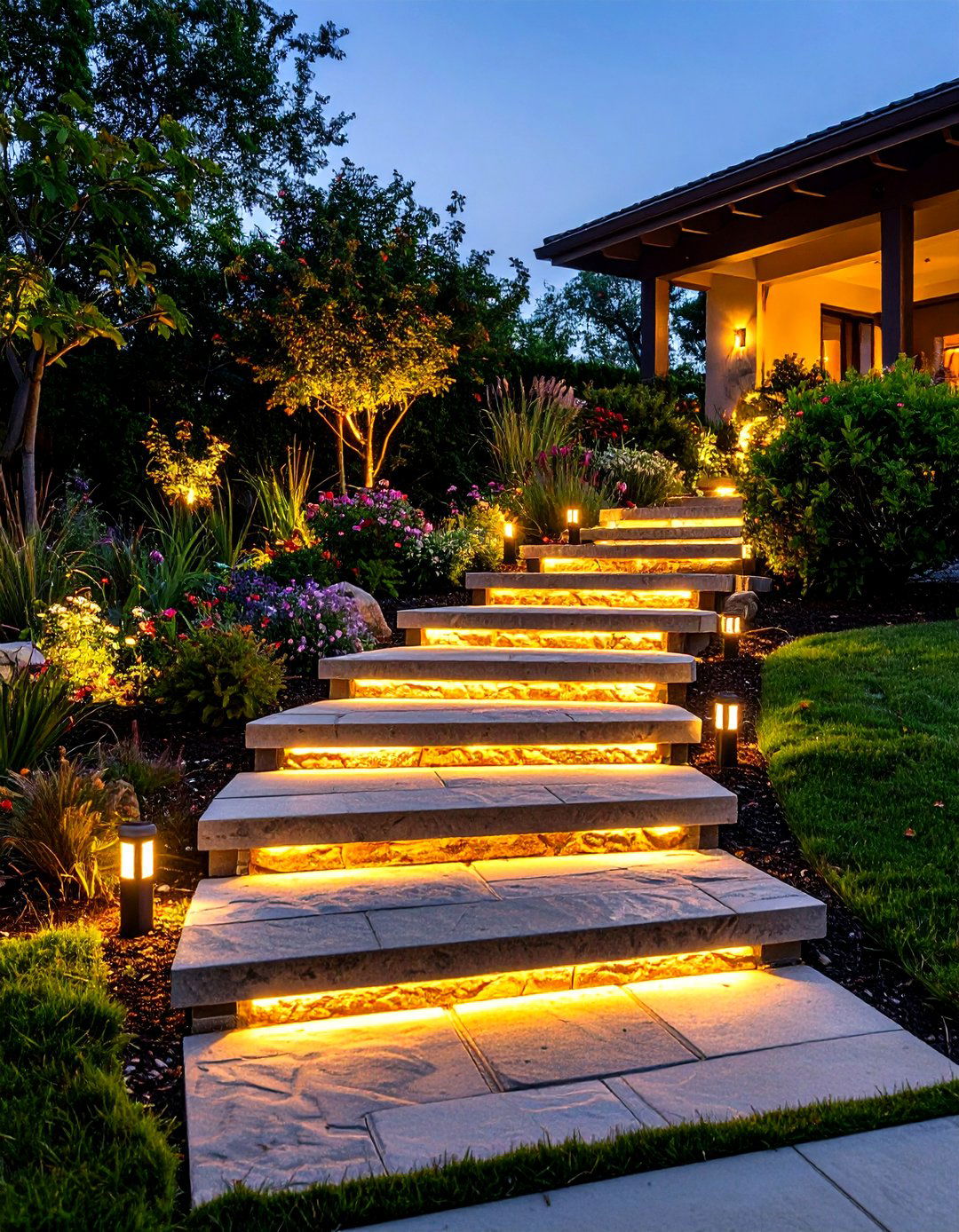
Strategically placed solar path lights or low-voltage LED riser fixtures extend staircase usability after dusk while preventing missteps. Lighting designers advise a fixture every two to three steps for balanced visibility, with warm-white bulbs preserving the stone’s natural hues. Rapid-charge solar stakes reviewed in June 2025 earned praise for 50,000-hour lifespans and tool-free installation. Combining accent uplights on nearby shrubs with down-step illumination crafts a layered, resort-like ambiance.
13. Eco-Friendly Flagstone Construction Practices

Using locally quarried stone slashes transportation emissions, while permeable joints curb runoff and aid groundwater recharge. Homeowners gain LEED points for choosing natural stone over energy-intensive pavers, especially when pairing steps with native vegetation. Emerging 2025 lighting trends also promote dark-sky compliant fixtures that shield upward glare, protecting nocturnal wildlife around stone staircases.
14. DIY vs. Professional Installation Decisions

Ambitious DIYers can tackle short, three-step garden stairs over a weekend with rental compaction tools and basic masonry saws. Beyond that, the sheer weight—up to 150 lbs per slab—makes pro crews tempting. Cost analyses show professionals complete complex flights 40 percent faster, with fewer alignment corrections down the road. Factor in warranty: reputable masons often guarantee workmanship for five years or more, safeguarding your investment.
15. Pairing Steps with Flagstone Retaining Walls
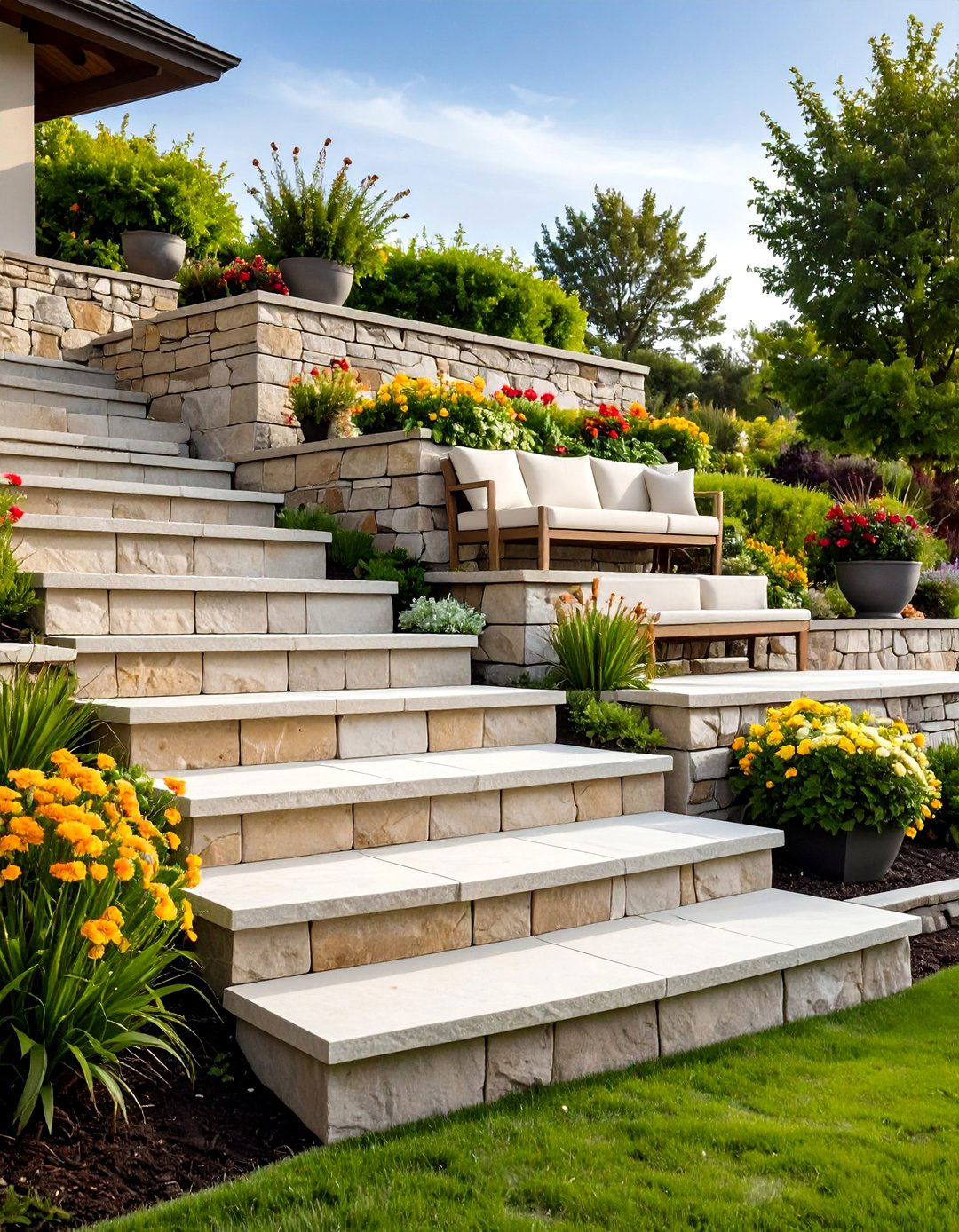
Integrating retaining walls into flagstone stair runs stabilizes hillsides and creates generous landings for benches or planters. Use the same stone species for visual continuity, staggering wall joints for structural strength. Some designers cap walls with contrasting limestone to frame the treads and provide a handy seat. Flagstone’s versatility makes it a natural partner for stacked-stone garden borders and raised beds.
16. Winterizing Flagstone Steps Against Freeze-Thaw Cycles
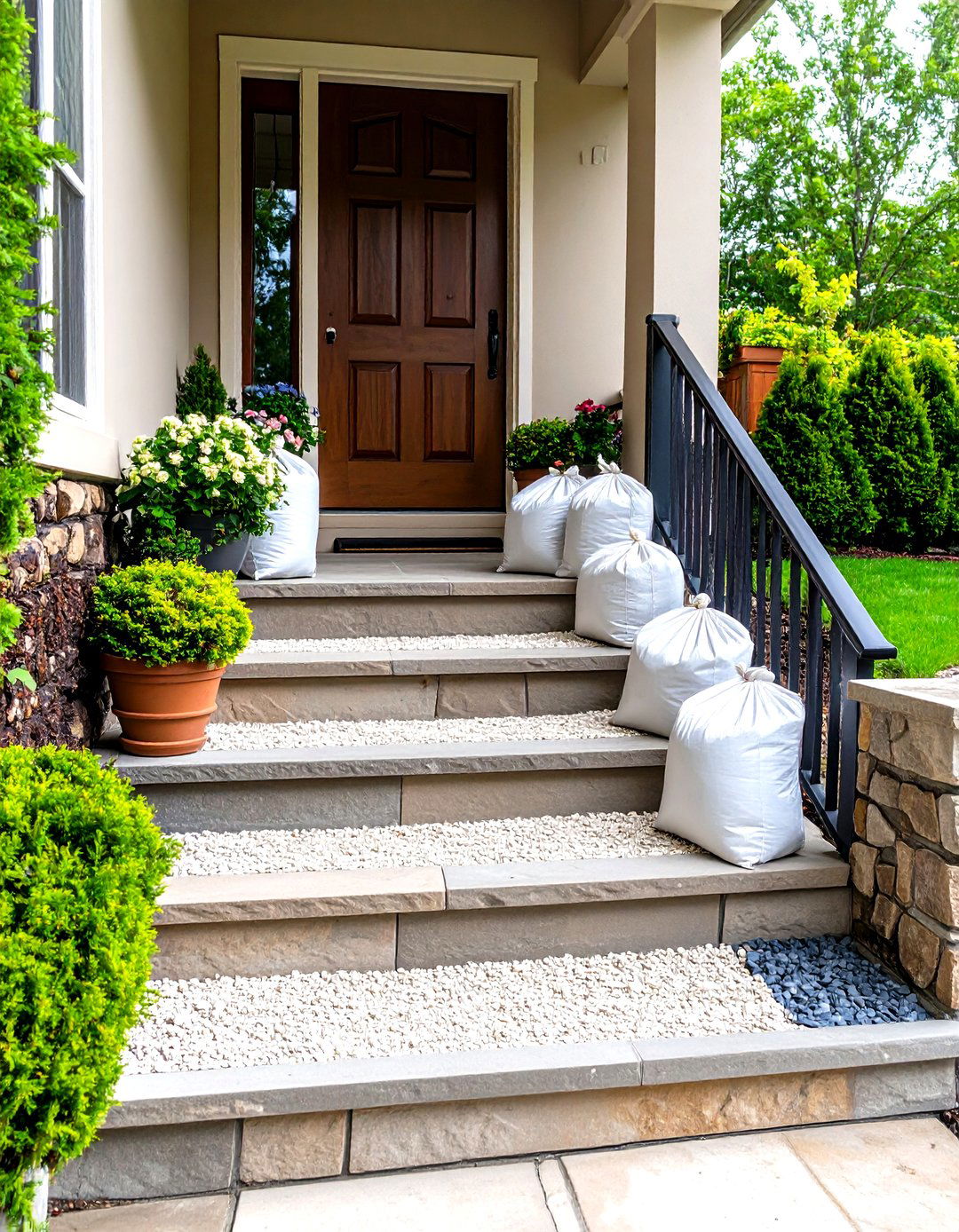
De-ice responsibly: rock salt can etch stone and corrode metal railings, so switch to calcium magnesium acetate or sand for traction. Ensure joints remain filled—empty crevices invite water that expands when frozen, prying slabs loose. Annual autumn inspections catch settling early; simply pry up low stones, add gravel, and reset. Cleaning professionals note that proactive winter prep slices spring repair budgets by a third.
17. Coordinating Stone Colors with Home Facades
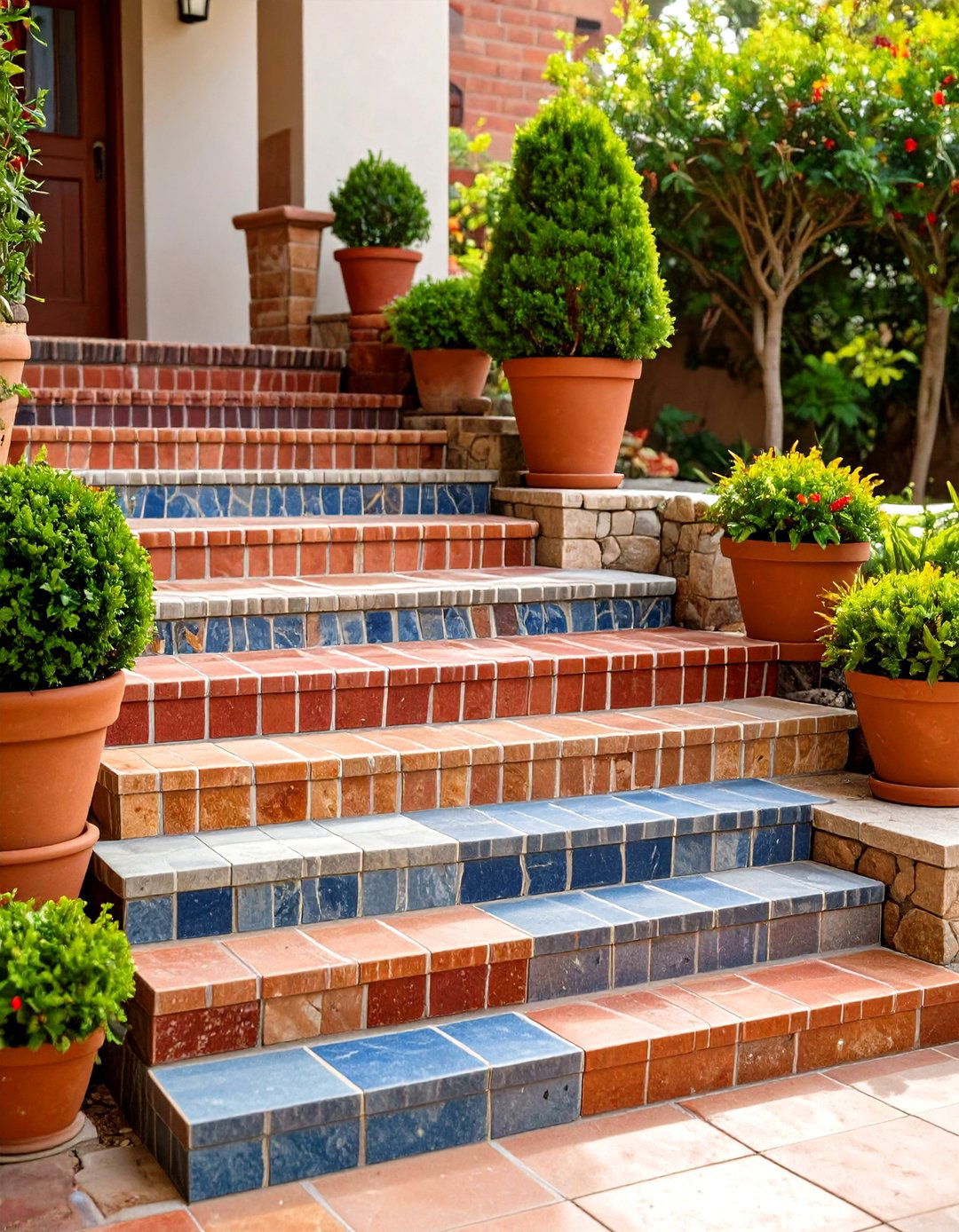
Match roof trim or window casings to subtle hues within the flagstone—rusty reds, smokey blues, or soft taupes—for a cohesive palette. Designers encourage ordering extra slabs to cherry-pick colors during layout, grouping complementary tones along the most visible risers. A recent patio trends article highlights earthy multicolor stone as a top request for homeowners seeking “built-in” harmony rather than a bolt-on afterthought.
18. Meeting Accessibility and Building-Code Standards
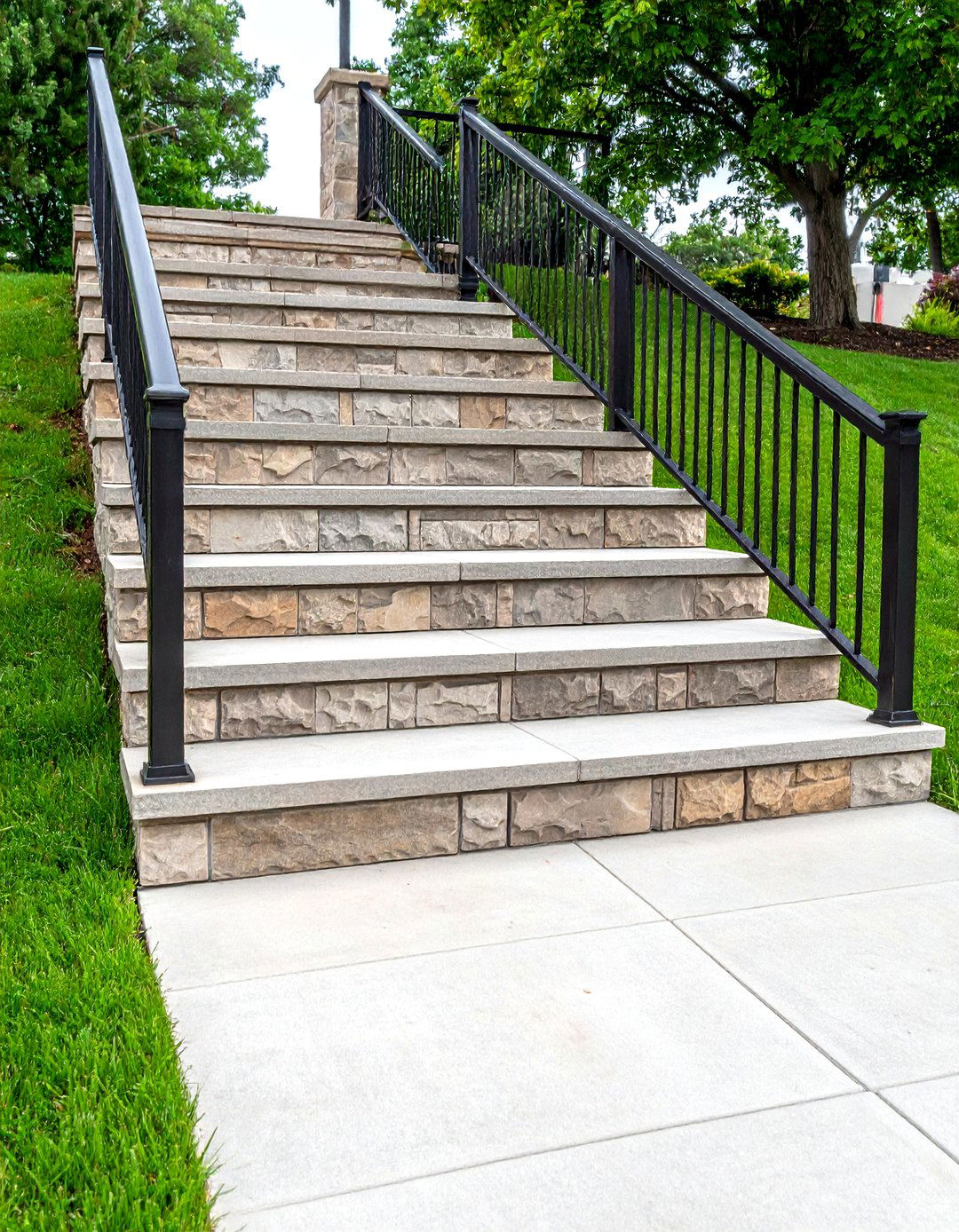
Riser heights between 4 and 7 inches and tread depths of at least 11 inches satisfy most 2024 International Building Code provisions. Consistency matters: variations greater than ⅜ inch can create trip hazards and fail inspections. For public spaces, incorporate contrasting nosing strips to aid low-vision users and maintain minimum 36-inch widths. Referencing current codes early avoids costly rework once the inspector arrives.
19. Blending Flagstone Steps with Water Features
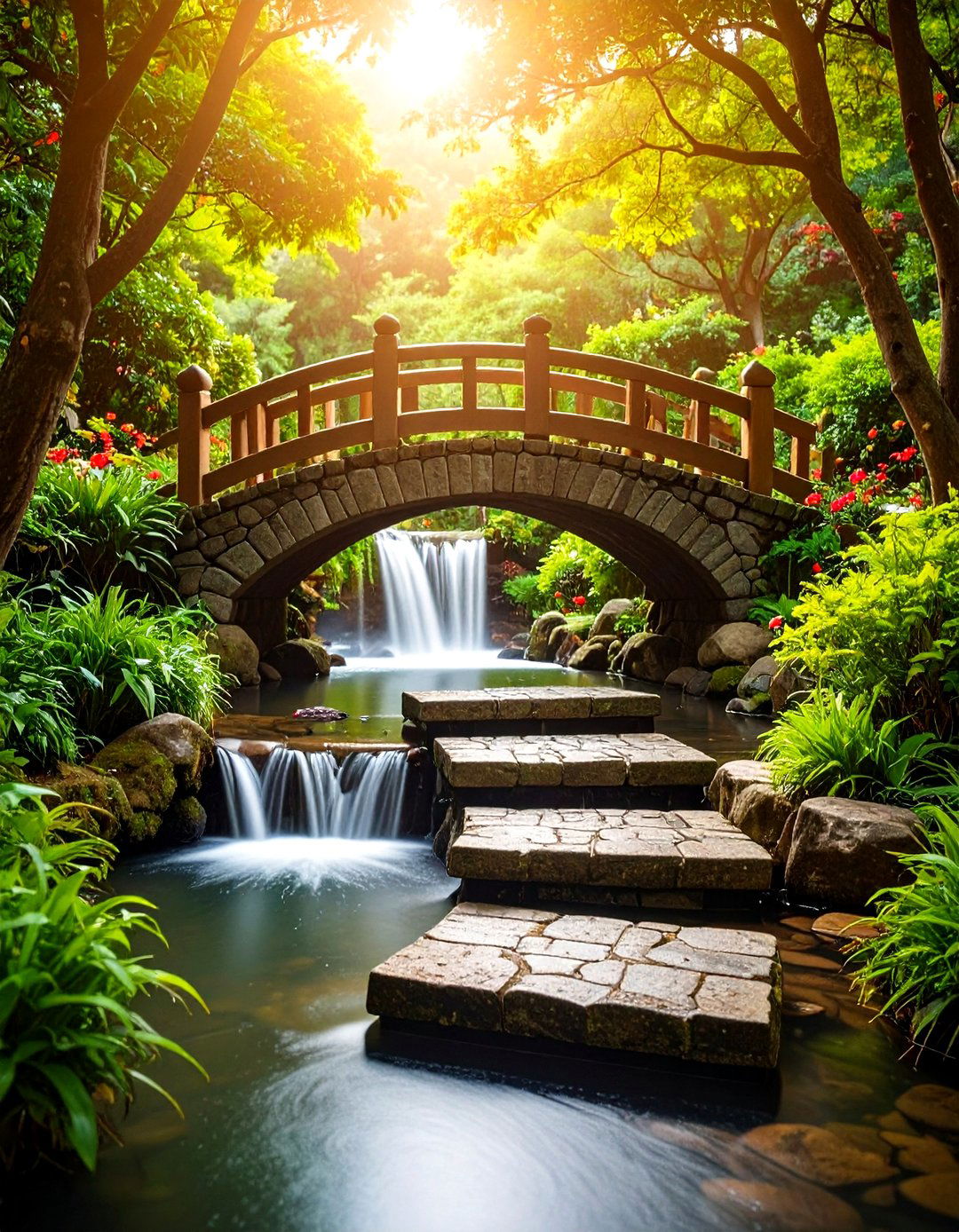
Whether edging a pondless waterfall or bridging a trickling rill, flagstone steps merge sound, motion, and texture into an immersive retreat. Set treads slightly overhanging water to reflect surface shimmer, and back-light cascades for twilight drama. Material guides praise flagstone’s natural clefts for adding grip where splash zones can slick smoother stone. Pond builders report that stone walkways double as maintenance access paths around filtration basins, proving that beauty and function coexist gracefully.
20. Flagstone Steps as a Garden Showpiece
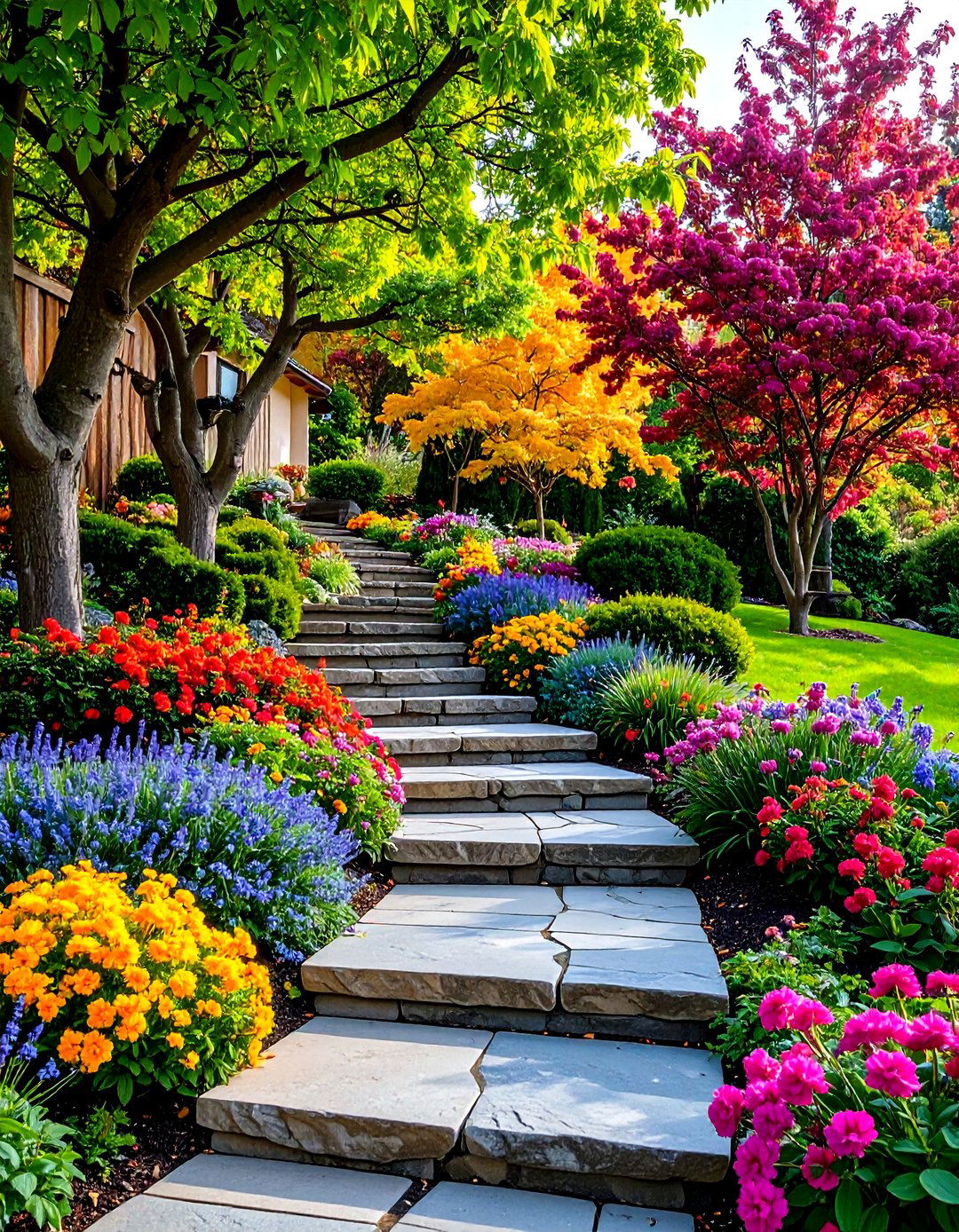
All things considered, thoughtfully arranged flagstone steps can anchor an outdoor room the way a fireplace centers a living space. By aligning treads with sightlines—perhaps toward a blooming border or sculptural tree—you create a visual storyline that invites wandering and lingering. Design magazines call this “processional landscaping,” where each rise reveals a fresh vignette. When paired with complementary patios and meandering paths, the staircase becomes the heart that unites terraces, lawns, and seating nooks into one harmonious composition.
Conclusion:
From their cool-to-the-touch surfaces to their rugged resilience, flagstone steps deliver a compelling mix of practicality and charm that keeps paying dividends year after year. Careful attention to base prep, drainage, lighting, and maintenance guards that investment, while creative touches—ground-cover joints, retaining walls, or a whispering waterfall—turn functional stairs into signature landscape moments. As codes evolve and eco-friendly practices gain traction, locally sourced stone and permeable construction ensure flagstone steps remain a forward-thinking choice for entryways, slopes, and garden retreats alike.



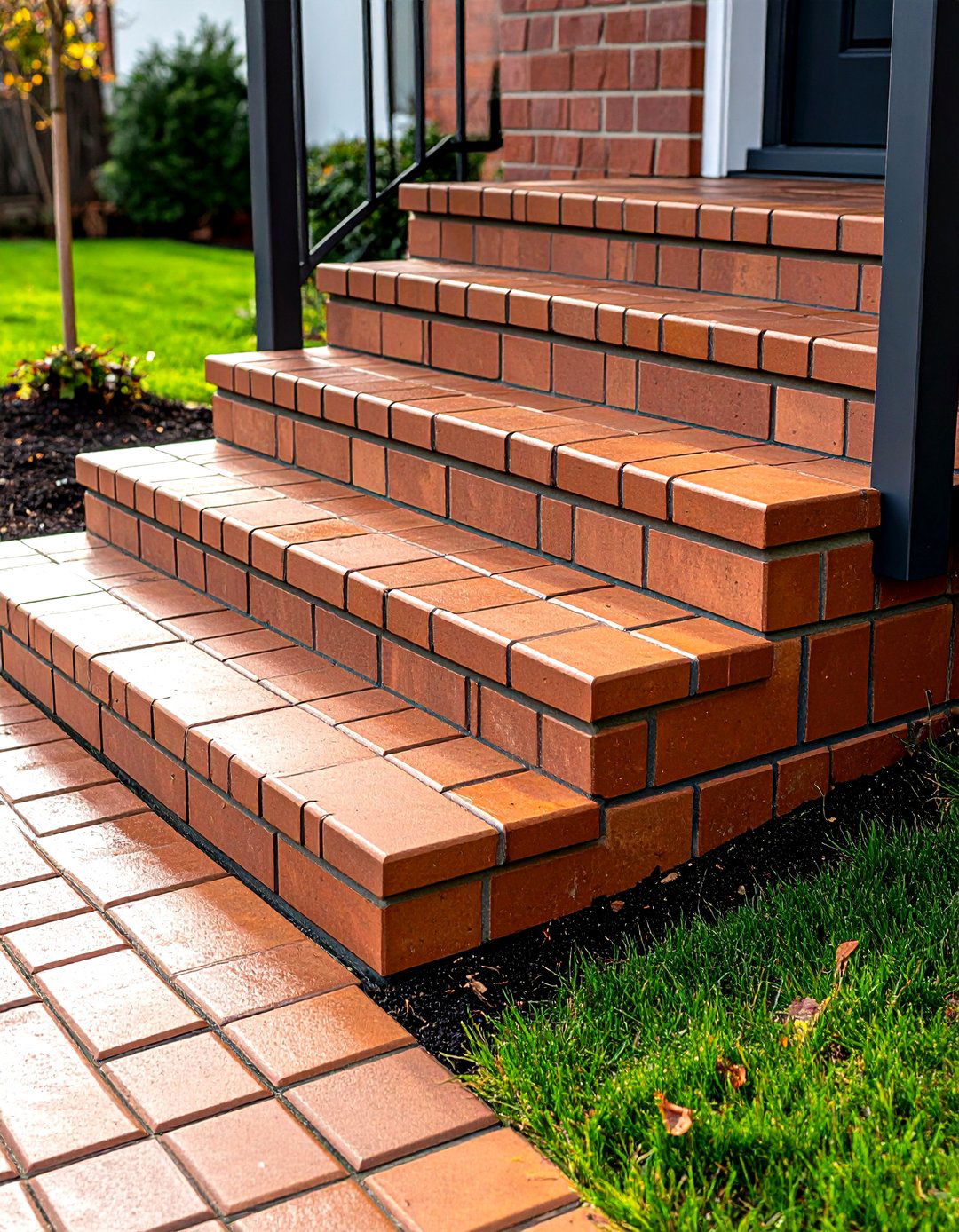

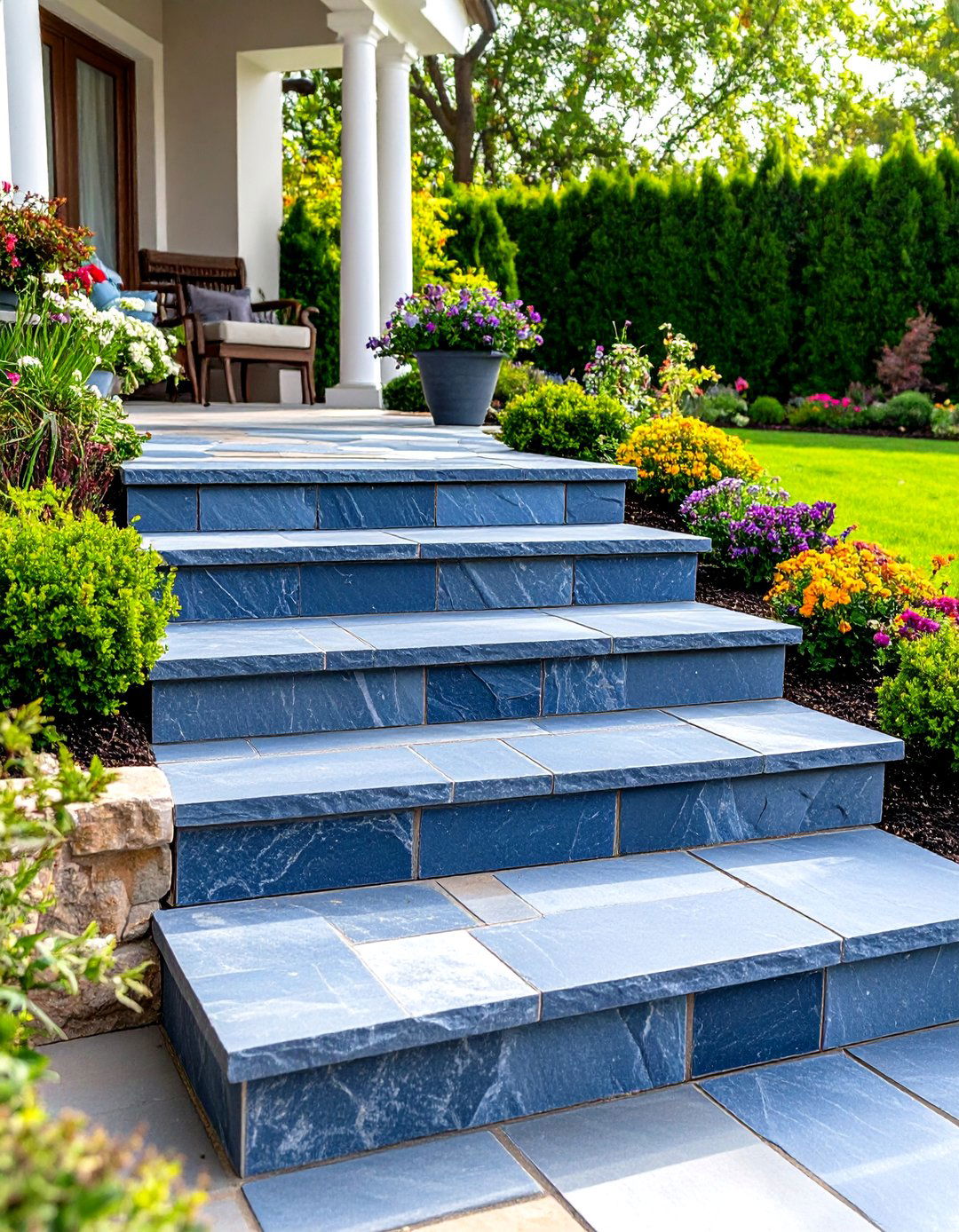
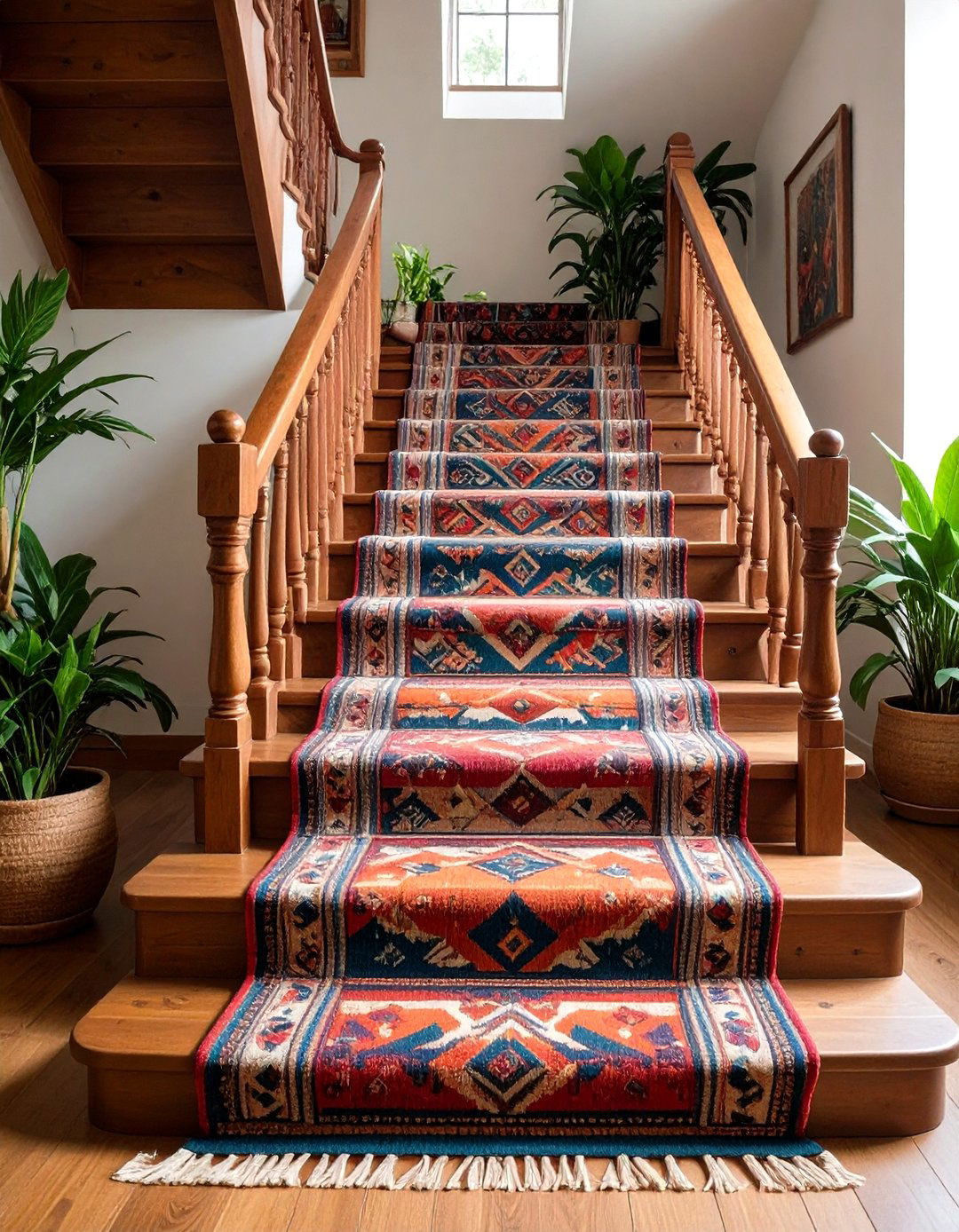
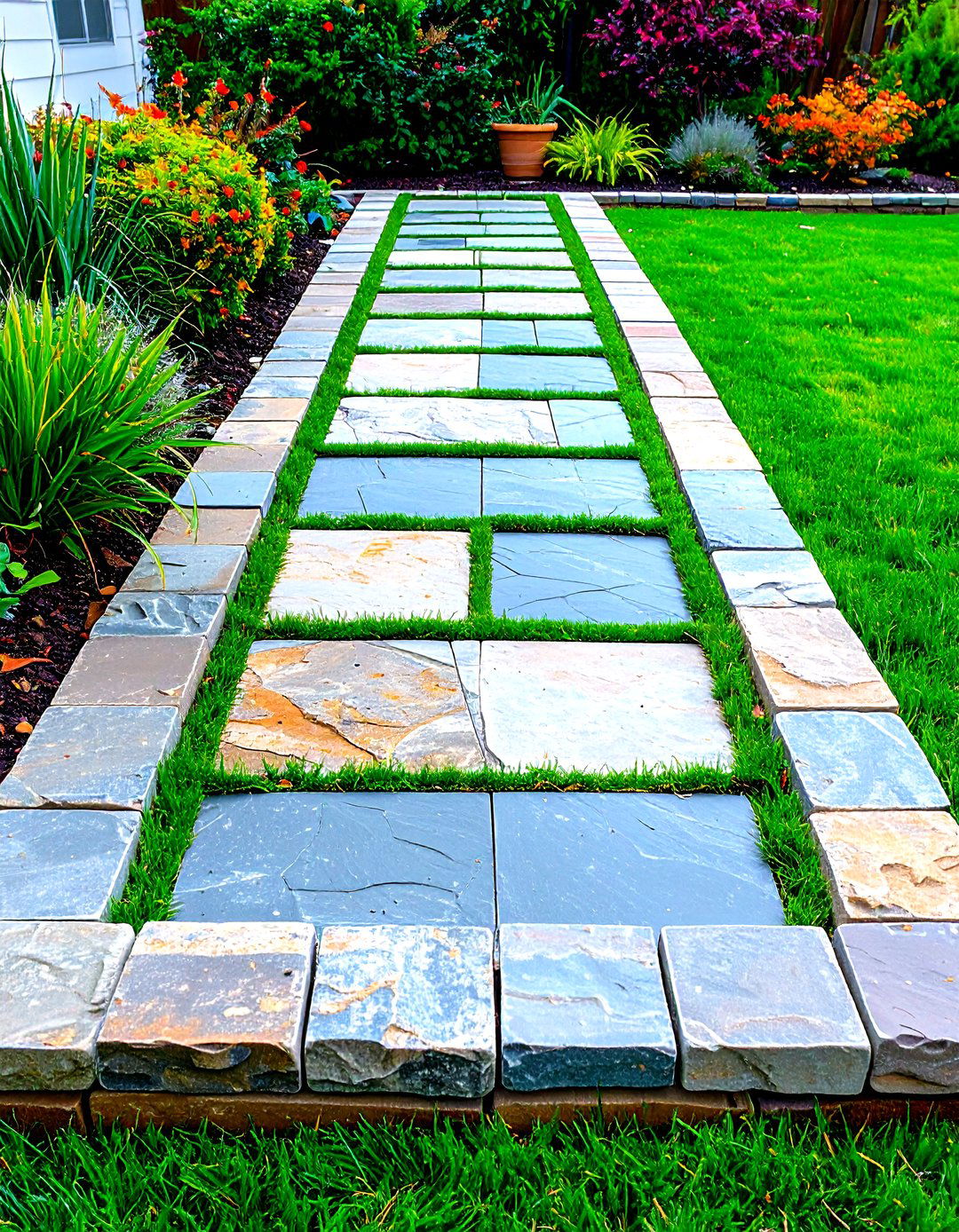

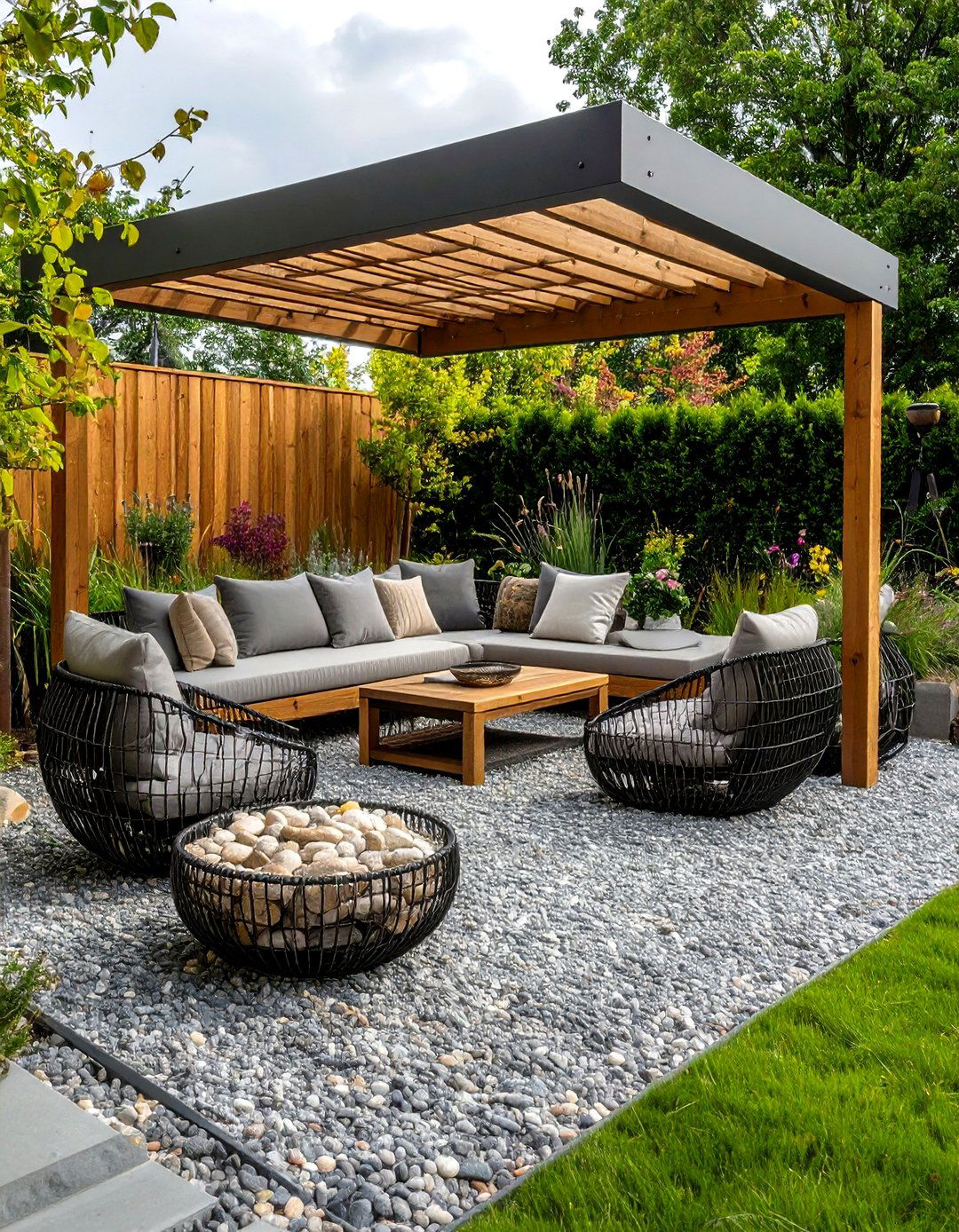
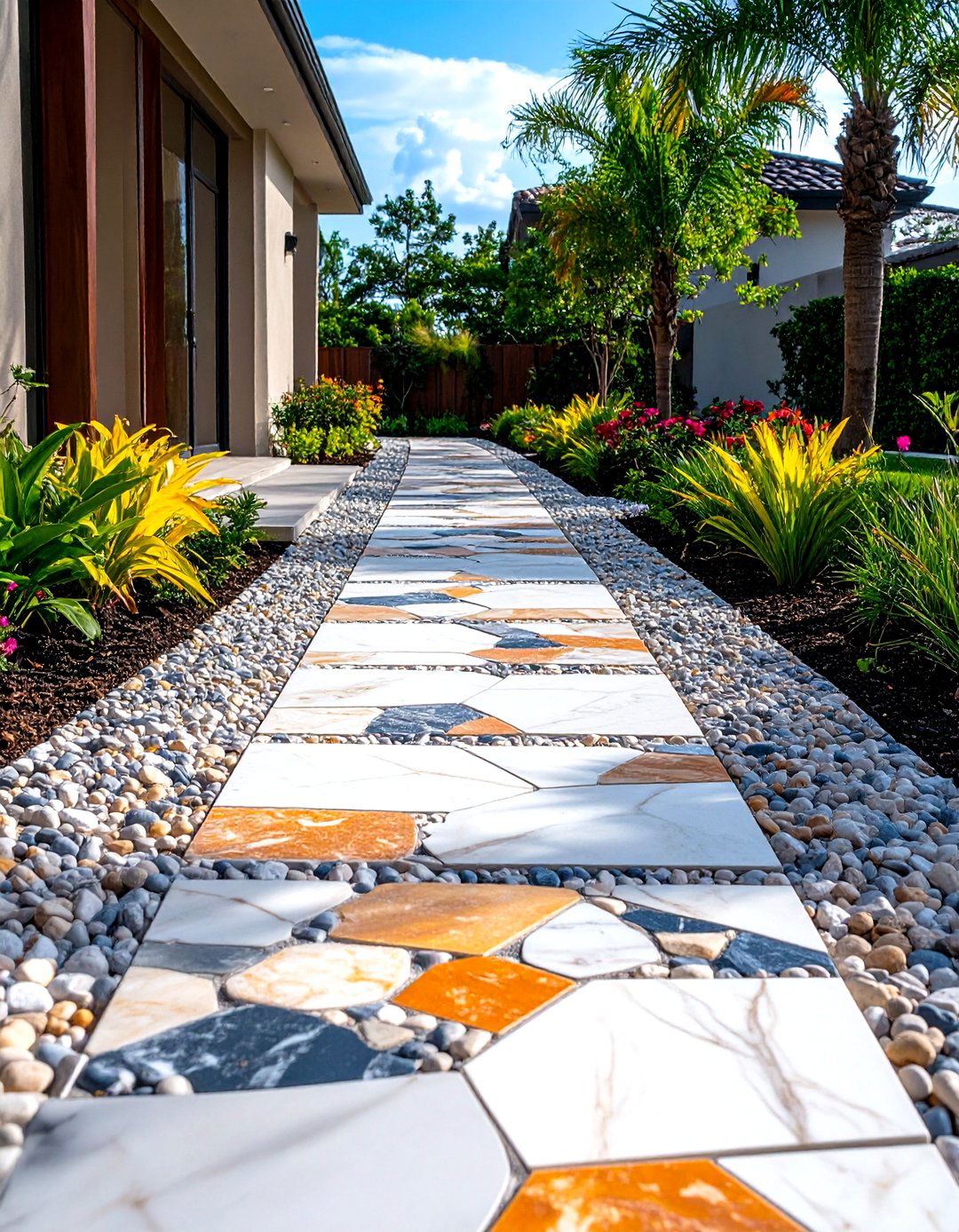
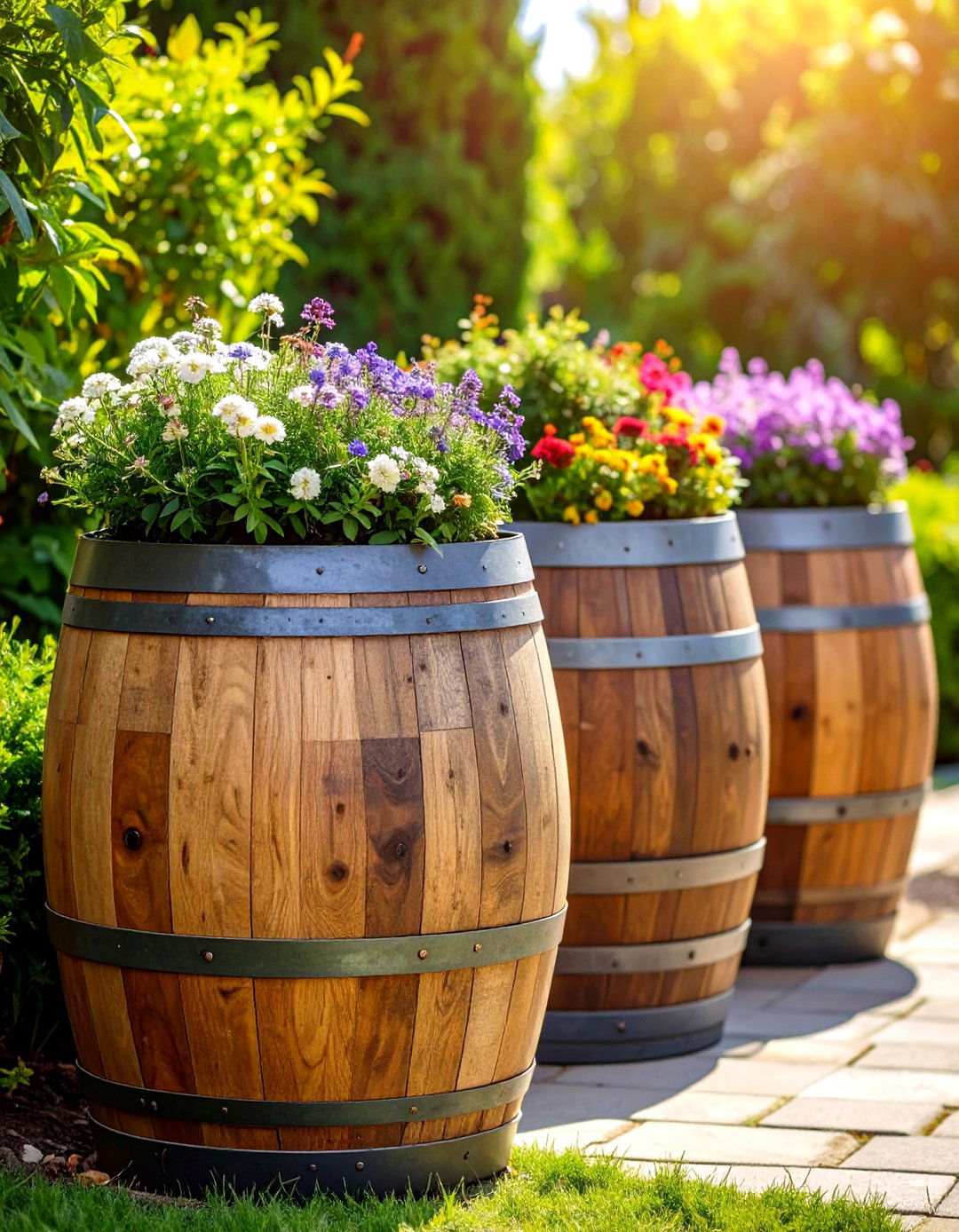

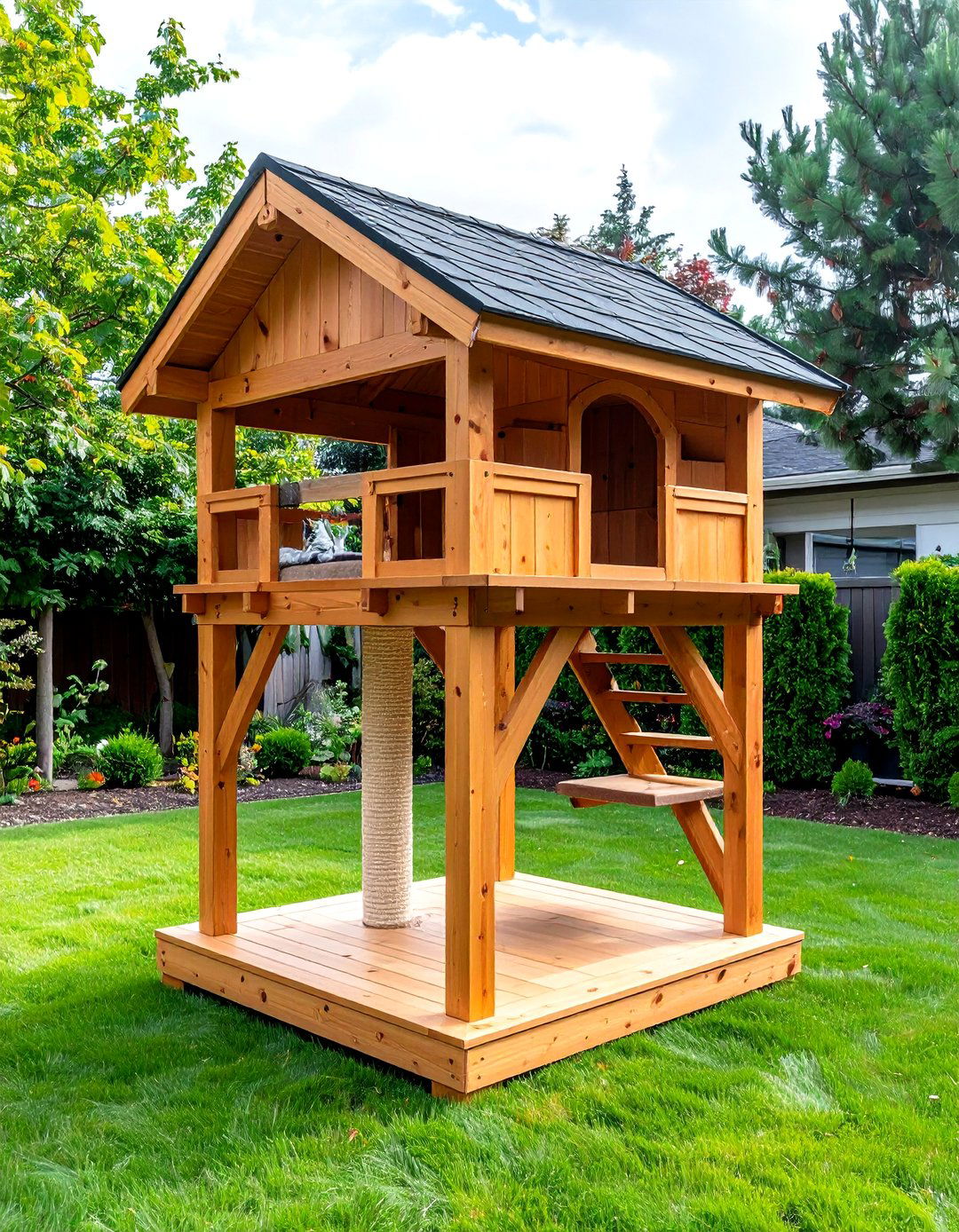
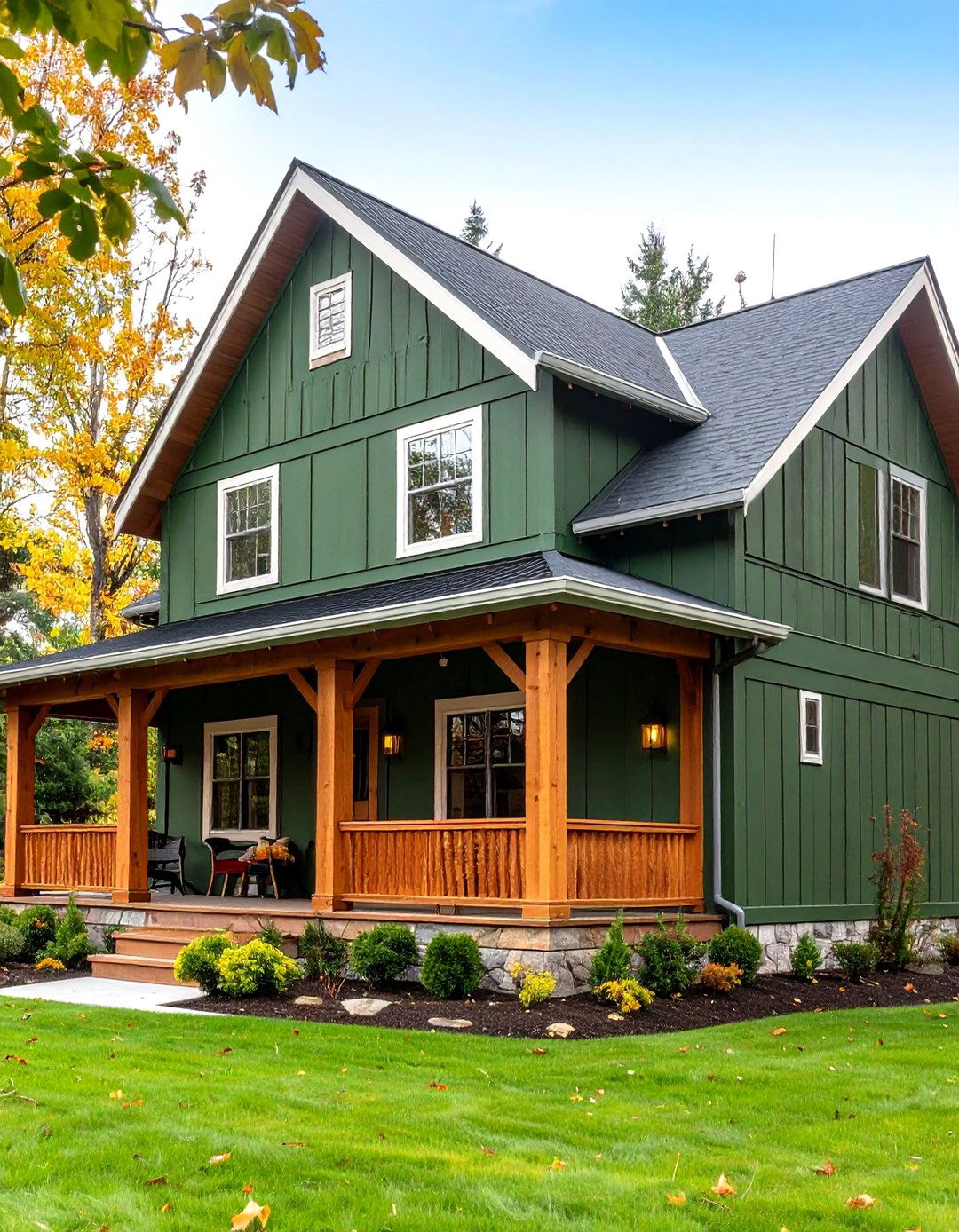

Leave a Reply